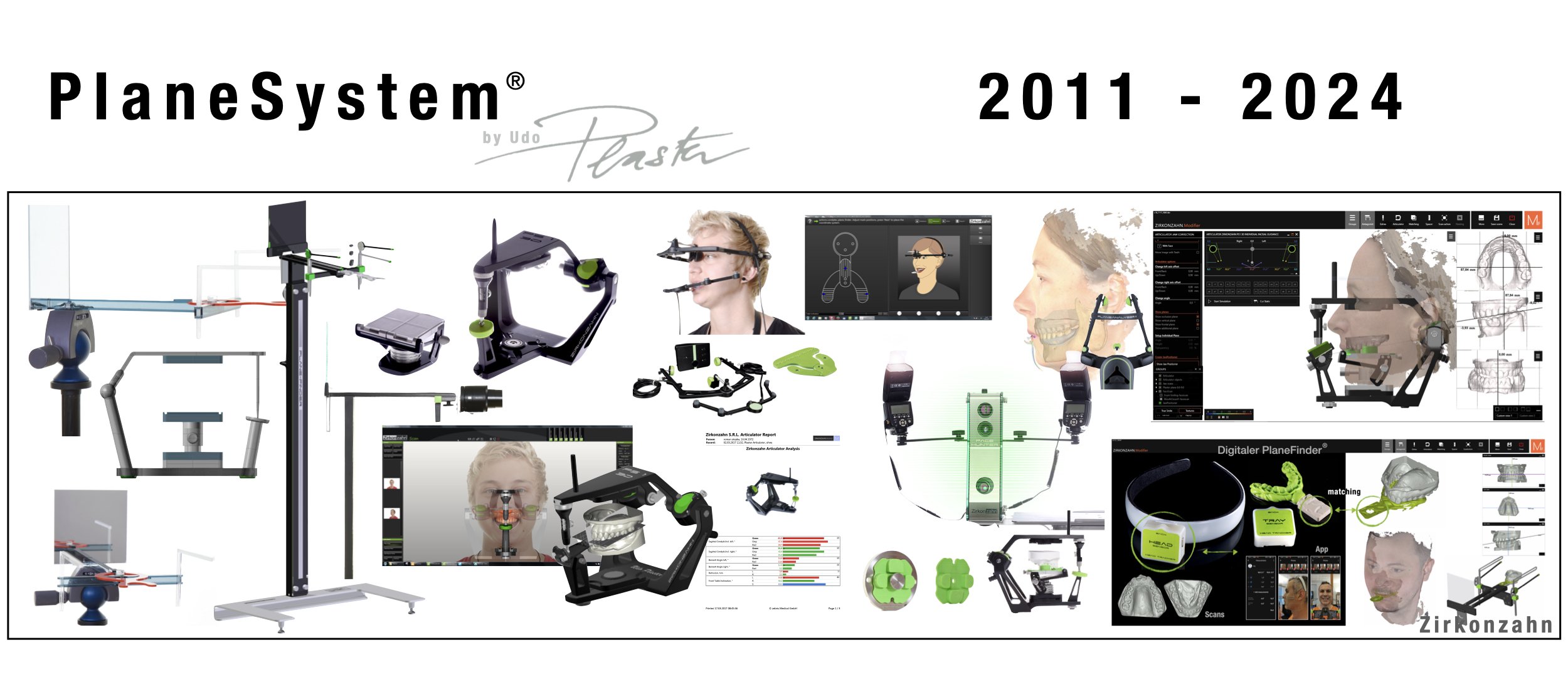Planesystem®
KNOWLEdGE EDUCATION Components
Components
An innovative approach for capturing and measuring
patient-specific occlusal information:
position of the upper jaw,
inclination of the occlusal plane,
bite position,
occlusal surface design,
tooth set-up,
lower jaw’s function analysis,
and its relation to the upper jaw.
For a precise planning security, a comprehensive patient consultation and better communication
between patient, dentist, orthodontist and dental technician.
Advantages
inaccurate results through facebows or transferbows can be avoided,
all data can be accurately matched in the articulator by means of reproducible reference planes,
integration of data for functional analysis carried out by dental professionals,
articulator with an innovative design,
completely integrated in the digital workflow.
Reference planes – what’s new?
When detecting the patient’s reproducible Natural Head Position (NHP) by means of the PlaneFinder® measuring/registering device, it is usually possible to localise a horizontal reference plane for the patient‘s skull in the repeatable manner. During the registration, the patient intuitively positions the midline vertically and in the center of the device which allows the user to visualise and record the asymmetries from the patient‘s face on the right and left side of this vertical reference plane.
THE THIRD DIMENSION IN PATIENT ANALYSIS
In clinical practice, incorrectly inclined occlusal planes and functionally inadequate restorations are a common scourge. A possible reason is the often imprecise analysis of patient information. Now Udo Plaster, master dental technician from Nürnberg, has developed a novel transfer approach, the PlaneSystem®.
It determines the occlusal plane and any associated asymmetries individually for each patient based on the ala-tragus plane and natural head position (NHP) and transmits the real position to the CAD/CAM system.
For an uninterrupted digital workflow, the data received and the corresponding coordinates in three-dimensional space must be correctly matched. This can be done with the S600 ARTI structured-light optical scanner and the virtual articulator implemented in the Zirkonzahn modelling software. The scanner acquires the data of the models from the PS1 articulator and transfers them directly to the software’s virtual articulator.
This allows possible compensations to be detected prior to developing a treatment plan for laboratory or chairside restorations, minimising or completely eliminating any sources of error, particularly during data transfer, which might otherwise occur when planning or fabricating a dental restoration.
PlaneSystem
PlaneSystem®
Aesthetic and at the same time functional solutions are a challenge in prosthetic restorative dentistry. The model situation in the articulator offers only average settings instead of patient-specific parameters and this usually does not reflect the clinical situation of the patient.
The PlaneSystem® enables the registration of the patient's individual position of the maxilla, the determination of the midline and of the individual occlusal planes (which can differ on the right and on the left side) in an accurate spatial positioning, as well as in the referenced transfer of this information to an articulator. This allows the possibility to imitate individually and thus more accurately and better than ever before the natural functioning of the patient's stomatognathic system already in the planning phase of a restoration.
On the contrary, conventional methods are less than adequate in determining the patient-specific position of the maxilla and thus the correct occlusal plane. The PlaneSystem® allows the recording of relevant patient planes without a transfer bow. Information obtained by means of a transfer bow positioned on the bipupillary line and fixed in the outer auditory canals carries the risk of inaccuracies and errors that the dental technician can no longer detect this on the model. Similarly, functional close-up contacts in dynamic occlusion cannot be represented realistically enough using a transfer bow. An asymmetry of the occlusal plane in the right and left upper jaw is also not detectable with a conventional transfer bow. The starting point for measuring and recording asymmetries with the PlaneSystem® is the definition of an exactly reproducible horizontal plane and vertical line from the face of the patient. The True Horizontal Line as a zero-degree plane point of reference and the True Vertical Line as a point of reference for the (referable) vertical plane are determined by the natural head position of a patient. Another reference line is the ala tragus line which is captured at both sides and which runs mostly parallel to the occlusion planes, located on both sides. A different inclination is represented in the PlaneSystem® as an angle between the zero-degree reference plane and the ala-nasi line (connecting line from ala nasi to tragus).





